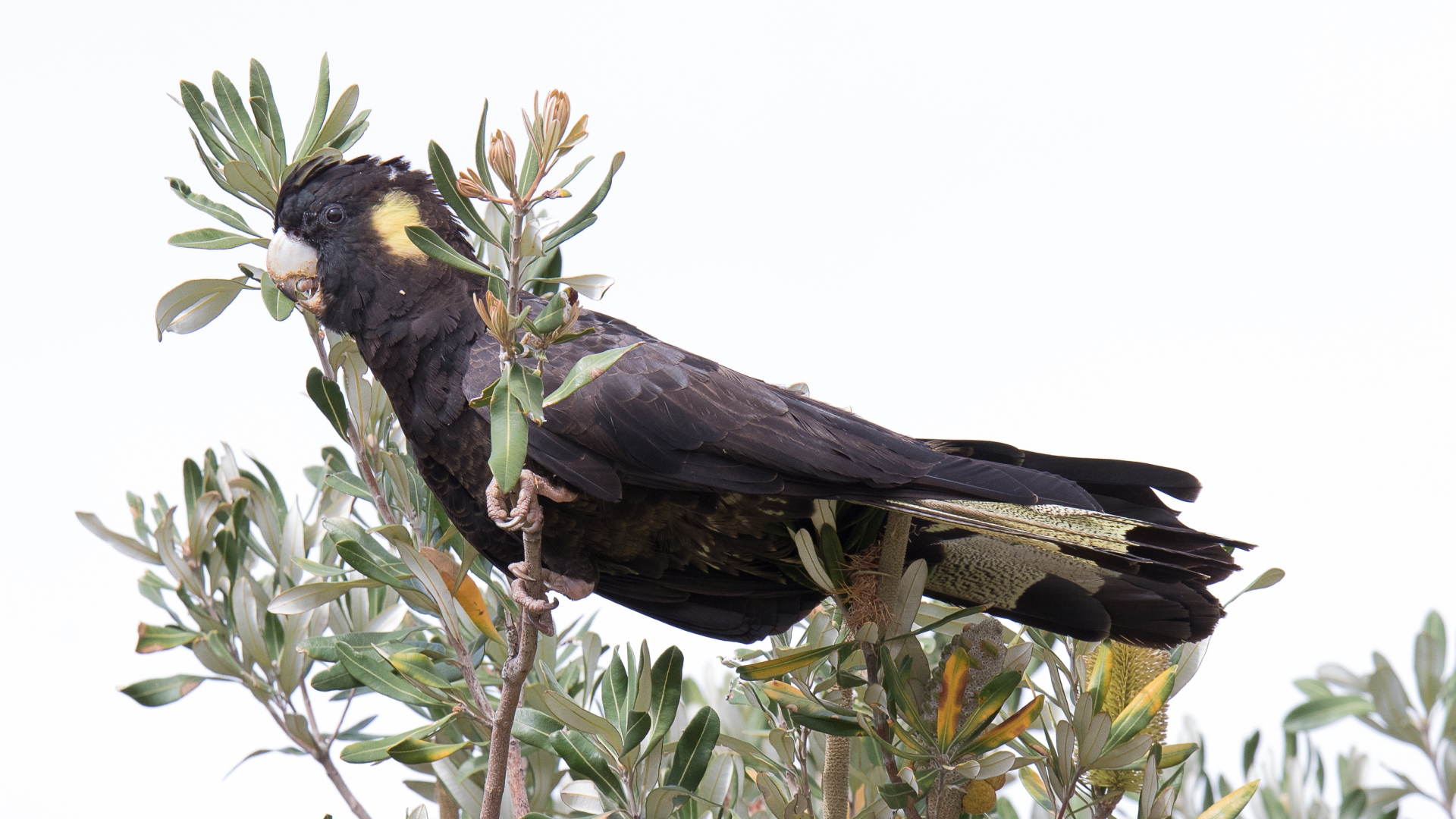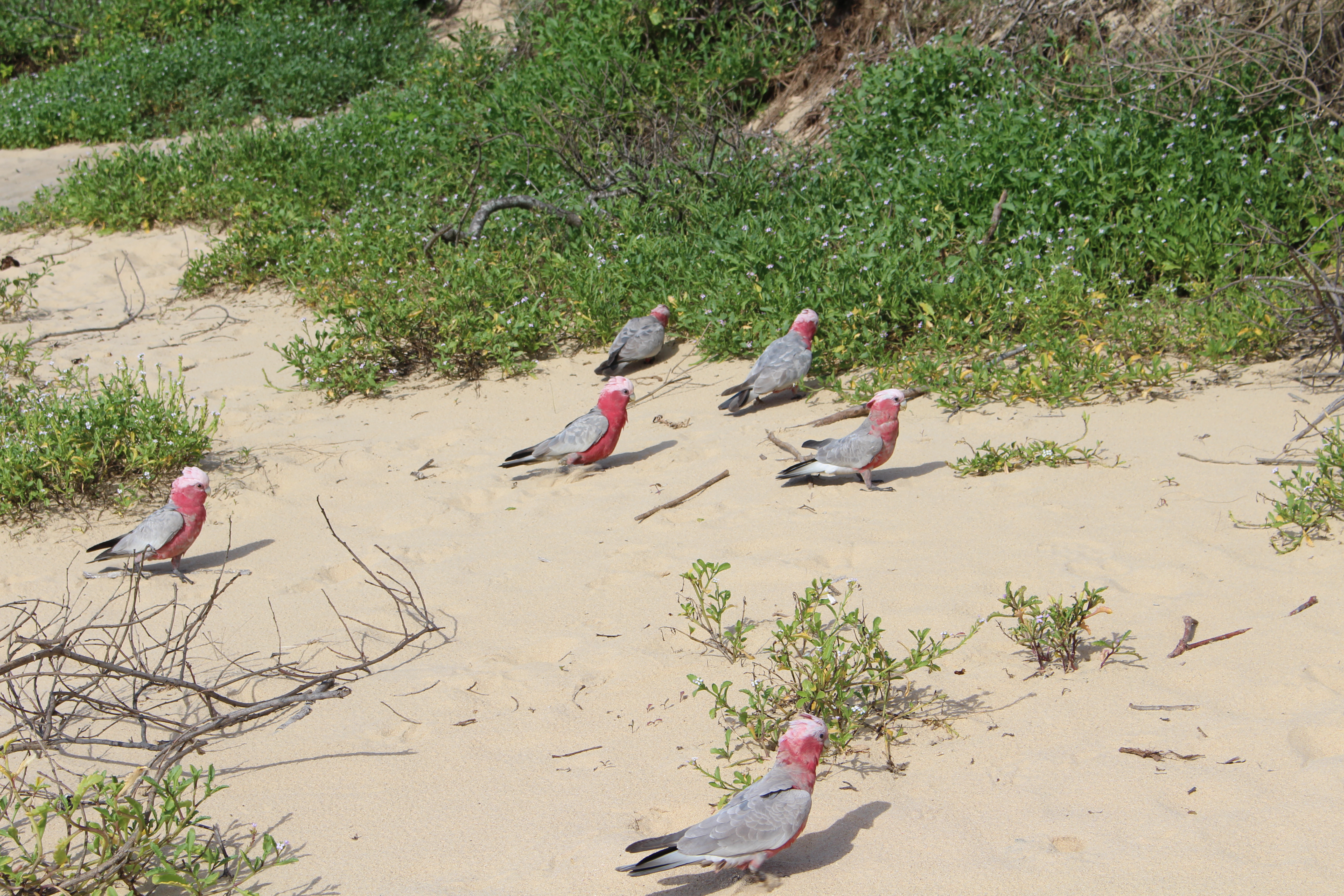This is an old post I am re-publishing with updated photos .
When people think of Australian fauna they think of the cute and furry marsupials – koalas, kangaroos and wombats or in the bird world they think of the sight of a running emu or the sound of a laughing kookaburra. But to my mind, it is the parrots which are the attention-getters – the stars of the Aussie show. Colourful, intelligent often raucous and bold, they never fail to delight and distract me. Many parrot species are long-lived, some mate for life – this devotion to one another is both heart-warming and fascinating. When we moved houses over ten years ago, from a block surrounded by rain-forest to coastal suburbia, it was the parade of parrots I missed most . The following is part of an essay I wrote entitled, Our Escarpment Home.
The parrots were the gaudy stars of the bird show and the avian personalities we observed the closest, due to occasionally feeding them native seed mix. The king parrots were the most spectacular with their fire-red chests (and heads in males) and their backs of velvety green. Despite their regal appearance the king parrots were humble. They watched us warily with soft eyes as they ever so daintily picked at the seed. They dwelt only in the tall trees. They’d land on our high veranda railing but I never saw them descend to the ground. This was such an unbreakable habit that we witnessed quite a few in great distress one scorching New Year’s Day. The thermometer soared to 43 degrees Celsius and four kings arrived dazed on our balcony, their mouths gaping with thirst. They were beyond being able to fly or even beyond reasoning to take water from a bowl. One female collapsed in front of us. We took it inside and squeezed water from a rag into her mouth. We saw no other species of birds in the trees or deck. We assumed the others had descended lower into cooler gullies and dense undergrowth, but not the ever-tree dwelling kings. When the evening came with a cool southerly change we released the distressed parrot. She flew to a nearby tree looking somewhat stunned. We could only hope she survived her traumatic experience.

The king parrots may have dwelt in the tops of the trees but they certainly weren’t the top of the pile. That honour belonged to the cheeky rainbow lorikeets. As their name suggests their plumage is a brash assortment of colours – blue, yellow, orange and green. They are the smallest but the pluckiest of parrots, the top guns. They’d skim past the corners of our house at impossible speeds and with pinpoint accuracy. The sulphur-crested white cockatoos are four times the size of the lorikeets but fled in submission when a pair of these bossy little birds flew to the deck.

The white cockies provided the comic relief in the parrot drama. There is nothing subtle about these big birds. They’d land on the railing with a thud and pleading squawks then proceed to earn their seed by entertaining us with gawky, swaying dances, nodding heads and expressive talking. Sometimes they’d ramp up the physical comedy by hanging upside down from their perch or pretending to fall from the sky in an uncontrolled dive, only to recover with much squawking and flapping.

The blue and red, Crimson rosellas were the shyest, the backstage workers. They often didn’t land on the veranda at all but picked up the scraps of seeds flung to the ground by the messy cockies or impatient lorikeets.

The largest of the parrots were the transient black cockatoos who flew through the tree tops calling to their partners with their mournful drawn-out cries. A flypast of black cockatoos was relatively rare and we would rush out to watch them as they wheeled and cried through the trees.

Note: Since I wrote this post back in 2017 it seems parrots have become more common in our home closer to the beach in the Northern Illawarra. Perhaps pushed here by drier conditions in the west and lured by backyard grevilleas and callistemons (bottlebrush). Recently we have also seen large flocks of black cockatoos – they love the coastal banksias which grow just beyond the beach dunes (pictured). The King Parrots are the exception as they prefer the tall trees of the escarpment (hence the old photo) to the coastal scrub. The one parrot that has always been more common here are galahs. They can be seen grazing on lawns or waddling on the sandy beach.




Great photos!
LikeLiked by 1 person
Beautiful birds and thanks for the background given. The Galah must be my favourite, I will be able to track it better in order to take photos :). Also hope the king parrot made it
LikeLiked by 1 person
Thanks Abrie, Galahs like open grasslands (inland and the coast) – I don’t often see them on the beach (like the photo) but often on the front lawn. They’re very pretty and the ones on the beach that day let me get very close. King parrots love the rainforest and trees so are on the opposite end of the habitat spectrum. thank you for dropping by.
LikeLike
The galah’s gave you a gala of colour and experience (oakay that is a bit lame 🙂 ) I was under the impression the all the the parrots game from central Africa and indeed the wrong impression
LikeLiked by 1 person
Thank you naturebackin. I am so glad you found the Australian parrots captivating too. I actually get homesick for their sights and sounds if I am overseas or in the city.
LikeLike
Lovely descriptive writing and photos and gorgeous parrots. We visited Australia to visit relatives a few years back and saw most of these parrots pictured in your post. The parrots were among the highlights of our stay.
LikeLike